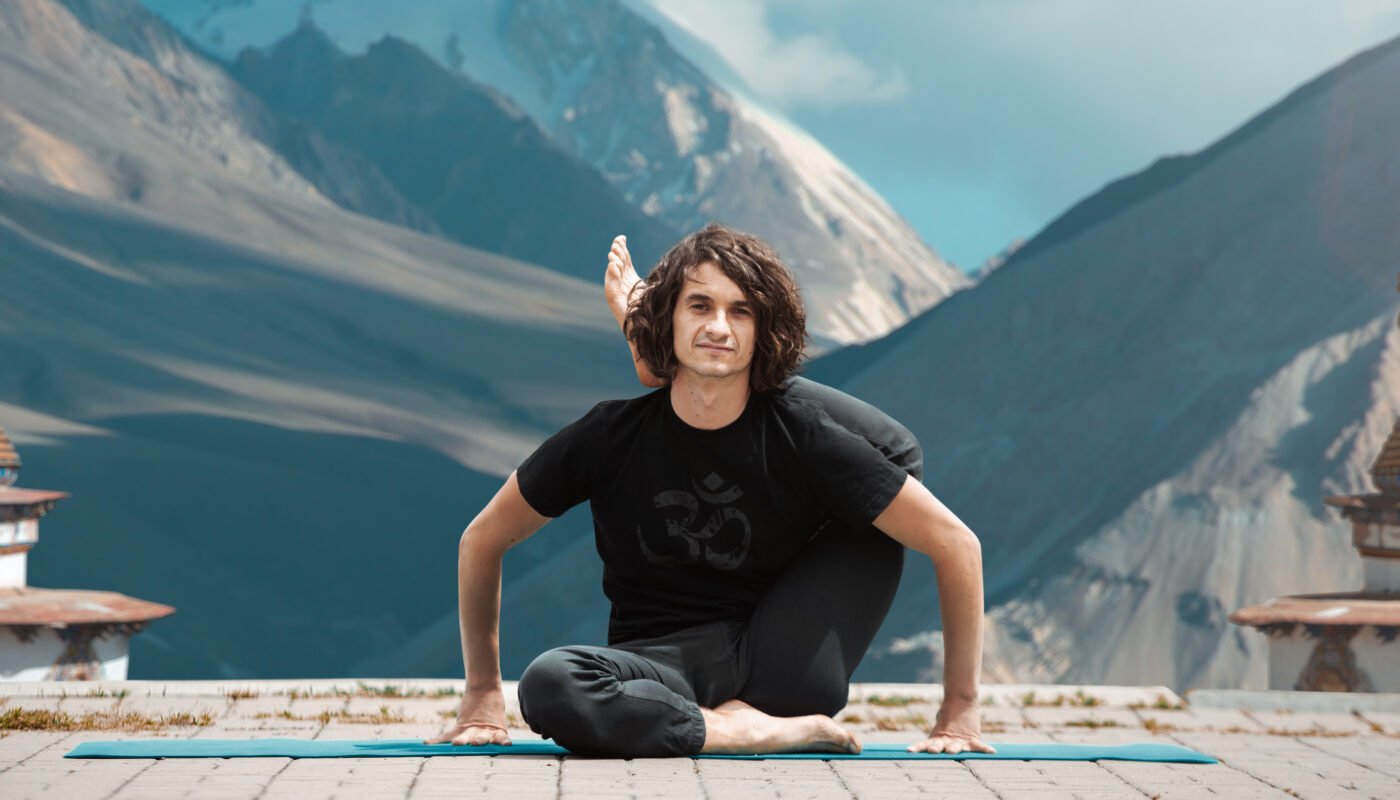What is the four stages of yoga as a beginner : This post draws upon ideas gleaned from Vedantic texts and seminal works of Kashmiri Shaivism; some aspects also allude to Krishna’s teachings in the Bhagavad Gita.
Many of us start yoga thinking we can learn it quickly – within weeks or months at most – until three months pass and we have nearly managed to open up our hips or improve hamstring flexibility.
As soon as you undertake a spiritual practice without understanding its true essence, its potential becomes impossible for progress to occur. After weeks, months or even years have gone by you will reach and stay at a plateau determined by physical limitations which define its limits of motion and thus hinder further advancement.
Many will stop, surrender or linger during this point; others use this stagnation time to reflect more deeply upon yoga’s spiritual traditions beyond biomechanical perspectives – because ultimately yoga encompasses far more than stretching poses!
In this article, I will present insights from yoga masters regarding how to avoid these potential traps and make gradual and meaningful progress with their yoga practice, rather than seeing yoga simply as another form of physical fitness exercise.
Yoga and Pranayama: Four Stages of Learning
Arambha Aavastha

- Armbha is a term meaning to “start or initiate”, while “avastha” translates to status or standing; therefore the phrase arambh avastha refers to the early steps for both novices and beginners in learning an instrument or art form.
- At this initial point, it’s important to gain your first impressions of an enlightened exercise. At this time, focus on understanding its nature, purpose, and anatomy in full detail.
- Use articles, talks and speech as forms of instruction or knowledge dissemination.
- Experts’ dissemination to increase curiosity and understanding is also one of the few times when academic approaches may prove advantageous.
- But your approach must be approached carefully. Your mind can help guide you as you learn from a yoga teacher or experienced practitioner what “prana” means; mindfulness ensures you’re fully present and experiencing what life has to offer you.
- As an example, you could learn yoga breathing through instructions provided via videos, articles or books or with an instructor. Take your time practicing it carefully and slowly as each movement comes your way; be mindful of every one.
- Are You Tense In Your Back or Sitting Upright? Do You Experience Strong Breathing? How many times did you Exhale and Inhale during Natural Breathing? Did Inhalation Outnumber Exhalations by Any Significant Amount (or does the converse apply?)
- Rushing through this phase may allow you to bypass some obstacles or hurdles, but more likely than not there will be an obstruction that halts development and even worse, it may cause bad habits to form that cause more harm than good.
- Reducing errors can be frustrating and is one of the primary reasons people give up practicing yoga altogether. Pranayama, which is one form of meditation, should be performed four times.
- Breath Awareness.
- Pranava Chanting of Aum uses prolonged intonation.
- Preparatory Practices such as Yogic Breathing & Anulom Vilom (Alternate Nostril Breathing).
- Do not set strict routines or lofty goals that might place expectations and lead to disappointment upon you; when it is experienced fully and enjoyed fully it will bring more pleasure than discomfort – meaning more sessions from now on!
- Listen, learn, read and explore – make time in your schedule to do this regularly! If uncertain or stuck with something conceptual or technical, consult an experienced practitioner or join a like-minded community who can offer support when things become unclear or challenging to execute on.
- By the end of this stage, your breathing should become effortless according to the five qualities attributed to good breathing in yoga sciences. When this state of effortlessness has been reached, Ghata Avastha begins.
Ghata Avastha

- Ghata Avastha is the second stage that signifies mastery of form and deep insight into its essence. Here, the practitioner begins to experience prana energy for themselves.
- At this stage, your practice no longer remains subtle; its effects can become evident and be felt across emotions, thoughts and mind. Your practice no longer depends solely on sessions or learning to progress further.
- Now you are in a state where breathing to your advantage has become part of your lifestyle and life is becoming an ongoing form of meditation.
- Yogis describe Ghata Avastha as an early stage where your material desires begin to dissipate; this doesn’t imply becoming an ascetic or completely withdrawing from society.
- Instead, anasakti refers to an ability to maintain a healthy distance from material and sensual pleasures – in other words, you act responsibly rather than out of compulsion – similar to how Buddhist detachment theory operates.
- Kundalini meditation leads the practitioner on an inner journey towards awakening Kundalini sakti within themselves.
- At first, prana may only exist within yourself; during stage two it becomes detectable both inside and beyond you. Gradually, with practice pranayama at Ghata Avastha you will increase your ability to sense Prana Shakti throughout the entire material universe.
Parichaya Avastha

- Parichaya means to become familiar with someone or something; here, this stage involves familiarizing with yourself. During this spiritually intense stage, your understanding broadens to differentiate what’s real from what’s not real.
- Kundalini Shakti can be activated through advanced and rigorous practice to move through each chakra to reach its spiritual center – Sahasrara Chakra in the Crown Center – at which point practitioners are considered Siddhas.
- Prana, also referred to as Pranavrtti in Tantric texts, is said to be the carrier of Agni (fire) and Chitta (consciousness). When it enters and illuminates the sushumna nadi channel it will elevate any yoga practitioner or yogini to Parichaya state.
- Siddhas can be defined as individuals who have successfully attained what was intended. In our context, this implies that through proper pranayama practice one has attained self-realization by awakening Kundalini Shakti and attained Siddhi status.
- Mind and body come together as one, with physical boundaries expanding in tandem with mental faculties that become ever more expansive. Through this merger we come to realize the true nature of karma and its threefold consequences on us.
- Siddha Yoga describes practices such as Kaya-Vyuha and Pranava to dissipate karma. Additionally, Bhuta Shuddi or “balancing the five elements” helps alleviate feelings associated with death.
- Parichaya Avastha allows practitioners to experience the universe as an unintended side-effect of reaching harmony. They gain an insight into all its gross and subtle connections. At this stage, practitioners decide whether or not they wish to remain living in this world.
Nishpattya Avastha

Nishpattya Avastha refers to the state in which yoga practitioners attain “divine awareness”. It serves as an end-point, crowning or resolution to their practice.
This concept resembles Lord Krishna’s description of “moksha” (liberation) from the Bhagavad Gita. At this stage, prana experience surpasses physical, psychological, and emotional boundaries that normally limit us.
Your practice has enabled and elevated your consciousness while protecting against temptations from material reality.
Thirst, hunger, activities, and sleep no longer are driven by greed, lust or desire; rather it becomes an end point or state of enlightenment whereby consciousness remains permanently protected by Prana (life energy).
Nishpattya Avastha residents no longer practice yoga because they understand Prana and Apana law. According to classical texts, one way they can access/invoke prana is by placing their tongue at the root of the mouth palate and placing their tongue there.
Final Thoughts
New-Age Spiritualism has unofficially trademarked chakras and Kundalini yoga; however, Kashmiri Shaivism and Siddha Yoga offer extensive literature on metaphysics and dynamics of consciousness.
Today’s world can make some of this information appear obscure or difficult to digest; yet as someone who has diligently pursued Jnana Yoga for many years, I take great pleasure in making an attempt at sharing it.
These ideas may appear complex and arcane when translated, yet these concepts actually provide a tangible path toward a greater experience of universal consciousness and spiritual practice.
Many renowned scholars and practitioners have shared their personal thoughts and techniques for approaching spiritual practice through kriyas, mantras, and breathing. If these forms fascinate you, be sure to check out our recommended books so you can explore these concepts further.



